| City/Town: • Oakland |
| Location Class: • Residential |
| Built: • 1928 | Abandoned: • 2012 |
| Status: • Abandoned • Private Property |
| Photojournalist: • Nomeus |
Table of Contents
Bin Laden Mansion
Pratt House
This home in Oakland, Florida is commonly referred to as the Bin Laden Mansion due to its connection to Osama bin Laden, the mastermind behind the September 11th attacks on the World Trade Center and the founder of the Pan-Islamic militant organization Al-Qaeda. Situated along the shores of Johns Lake, the large gated estate features 1,200 ft of private shoreline, 5 bedrooms, 5 bathrooms, a 4-car detached garage, a 3,000 ft carriage house, and horse stables. Despite the negative attention it garnered, this home was actually built decades before it was occupied by the Bin Laden family.
Although the previous owners claim the home was built as a vacation home for William Pratt, a New York native and chemist who helped invent Jell-O, it was more likely to have been built by Frank M. Pratt. In the May 18, 1928 issue of the Orlando Evening Star, one column reads, “Frank Pratt of Rochester, N. Y., has commenced the erection of $45,000.00 home at Edgewater Beach on Johns Lake. The house will be a large two-story of hollow tile construction and the ground will be landscaped including a sea-wall fronting Johns Lake. This will be one of the finest homes in Central Florida.”

According to the last owners, the property was owned by Earl Silas Tupper, the inventor of Tupperware and founder of the Tupperware Plastics Company, sometime in the early-1950s, although this cannot be confirmed. The corporate headquarters of the Tupperware Company was moved from Massachusetts to Orlando, Florida in 1952. After a falling out with his vice-president Brownie Wise, which resulted in her dismissal in 1958, Tupper sold The Tupperware Company to Rexall Drug Company for $16 million. Shortly afterward, he divorced his wife, gave up his U.S. citizenship to avoid taxes, and moved to an island off the coast of Costa Rica, or according to other sources Isla San José.
In 1956, Garrett Nicholas Mastenbrook purchased the home from Tina Pratt Hale, the last of the Pratt family to own the home, and moved his family down to Florida. Mastenbrook was head of the Kalamazoo Die Casting Company of Kalamazoo, Michigan, and formely involved in the wholesale oil business. He became involved in citrus farming, as well as the buying and selling of citrus groves here in Florida. The Mastenbrooks owned the home until the 1980s when it was purchased by Khalil bin Laden.


Khalil bin Laden, the “Desert Bear”
Khalil bin Laden, one of Osama bin Laden’s 54 siblings, bought the property for his wife as a wedding gift in December 1980 through his Florida company, Desert Bear, for $1.6 million. The mansion would also be known as “Desert Bear” during the time. Soon after the 9/11 terrorist attacks, Khalil bin Laden, along with many other of his relatives, left the United States on a chartered flight accompanied by bodyguards and associates.
Khalil bin Laden had suspicious connections to the Tri-Border frontier region of Brazil, which is known for evidence of terrorism. Adding to the suspicions were his inquiries to informant Bonnie Sharrit about bringing in Arabs from Saudi Arabia and Brazil to attend a Florida flight school. According to federal officials though, Khalil bin Laden was not involved in the terrorist attacks in any form and left the country for the safety of his and his family.
The house lay vacant after that, attracting many vandals who caused damage to the home, including a safe thrown down a stairway and bullet holes in the walls. In February 2006, the property was sold to Aleem Hussain, the majority holder of PYC Development IV, for $4,043,800. Less than a year later, he was charged with running a $9 million real-estate scam and in 2007, was sentenced to seven years in prison. The house was foreclosed upon and bought by Johns Lake Investment Group for $1,725,800.
Photo Gallery, 2010
John LeClair
Around November 2012, a man named John LeClair made a lease-purchase agreement on the property with Johns Lake Investment Group. LeClair lived in the back house with nothing but a leather couch, a glass coffee table, a flatscreen television, and a computer, while the main house was planned to be rented out for weddings. Instead, LeClair abandoned the property after taking deposits for nuptials. Circuit Judge Donald Myers ordered LeClair to make restitution of $37,000 for “deceptive and unfair” business practices. According to those involved, LeClair had either hidden or sold off all of his assets, and those he had stolen from never received their deposits back.
The English Family
The house was purchased by Gary and Dana English in 2014 for $2 million. To pay off debt as well and to obtain funding to renovate the home, the Englishs planned on selling 11.3 acres of their 17-acre property to a development firm. The buyer, Alabama-based LIV Development Inc., proposed building a 242-unit luxury apartment complex. The residents of Deer Island, an affluent neighborhood between the highway and the lake, opposed the proposal as it was incompatible with the character of the town. They also cited traffic concerns for S.R. 50, an often-congested, six-lane commuter route into Orlando, and possibly harming their property values. City commissioners rejected the proposal in a 4-1 vote.
Owing more than $2.1 million for the property, Gary and Dana English filed for bankruptcy, and the property was foreclosed upon in July 2019. In 2021, the property was sold to Virginia-based real estate and development firm Cornerstone Group Development LLC for $7.7 million, who filed a notice in January 2024 to make “improvements” to the property, including demolition. The house was once again abandoned for several years before meeting its end on April 25, 2024.









































































































